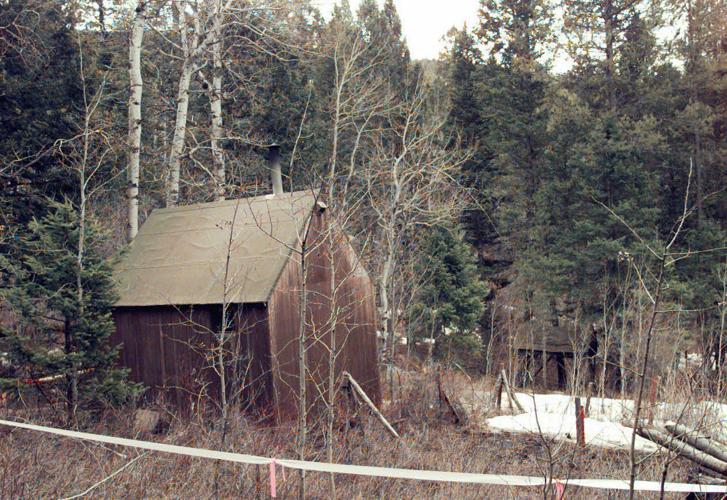Hidden deep in the woods near Lincoln, Montana, sits the now-emptied footprint of one of the most notorious hideouts in American history. This is where Ted Kaczynski—better known as the Unabomber—lived for nearly two decades.
No running water. No electricity. No neighbors. Just trees, journals, and bombs.
And while the cabin itself was seized by the FBI and now sits inside a glass case at their D.C. headquarters, the site where it stood remains—a forgotten patch of dirt in the wilderness that once housed a manifesto and a madman.
Where It Is
Location: Near Stemple Pass Road, west of Lincoln, Montana
Coordinates (approximate): 46.9618° N, 112.6954° W
The exact location isn’t marked, fenced, or advertised—and that’s the way locals like it. But if you follow Stemple Pass Road up into the Helena National Forest, then hike a few miles into the brush off one of the old trails, you’ll be in the ballpark.
There’s nothing left but a flat spot, some concrete footing impressions, and the haunting knowledge that one of America’s most infamous domestic terrorists once considered this place home.
What Happened Here
Between 1971 and 1996, Ted Kaczynski lived off-grid in this tiny, hand-built 10-by-12-foot shack. He hunted rabbits, grew potatoes, wrote thousands of pages of notes, and built bombs in silence.
From this isolated perch, he sent 16 explosive devices to universities, airlines, and computer stores across the country, killing three people and injuring 23 others. He left almost no forensic trace—until a newspaper publication of his manifesto in 1995 led to his brother recognizing the writing style and tipping off the FBI.
The arrest went down on April 3, 1996. Agents surrounded the cabin, fearing it was booby-trapped. It wasn’t. But what they found inside was chilling: a fully functional bomb ready to ship, detailed journals about every attack, and a typewritten 35,000-word manifesto against modern industrial society.
What’s There Now
Not much—and that’s what makes it powerful.
The National Forest has reclaimed most of the land. No signage marks the cabin’s spot. The shack was dismantled, boxed up, and trucked away by the feds. What’s left is a patch of wild Montana woods, unassuming and quiet.
Visitors who do find it describe a strange sense of absence. No markers. No memorial. Just a space that feels heavy.
And honestly, that’s fitting.
Should You Visit?
That depends on your intentions.
This isn’t a sightseeing stop. It’s a place for people who want to feel the weight of isolation, the fragility of sanity, or the slow erosion of a man who dropped out of society to declare war on it.
Bring a map, don’t expect cell service, and don’t go making noise about what you’re looking for. Locals are protective. Many of them lived through the national attention, the federal agents swarming their mountains, and the uncomfortable reality that such darkness had been hiding right under their noses.
One Final Note
The government kept his cabin.
They showcase it behind glass in a museum.
But they left the land behind.
And in that decision, they left a kind of unintentional monument: not to glorify, but to remember.
The Kaczynski site isn’t polished, monetized, or even marked.
It just exists—forgotten by most, but never truly erased.



